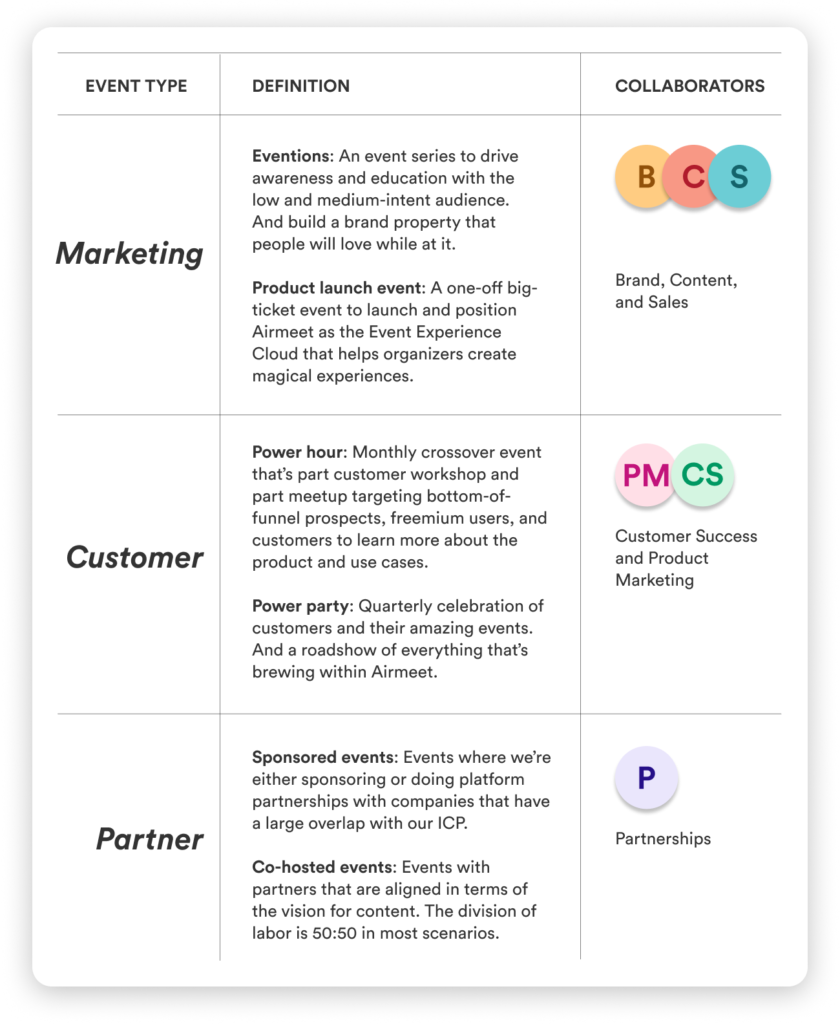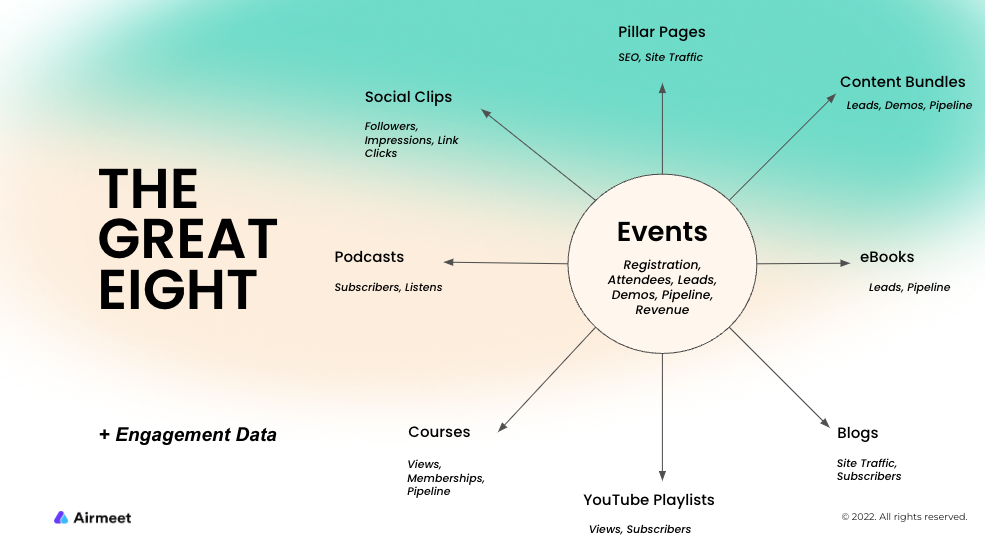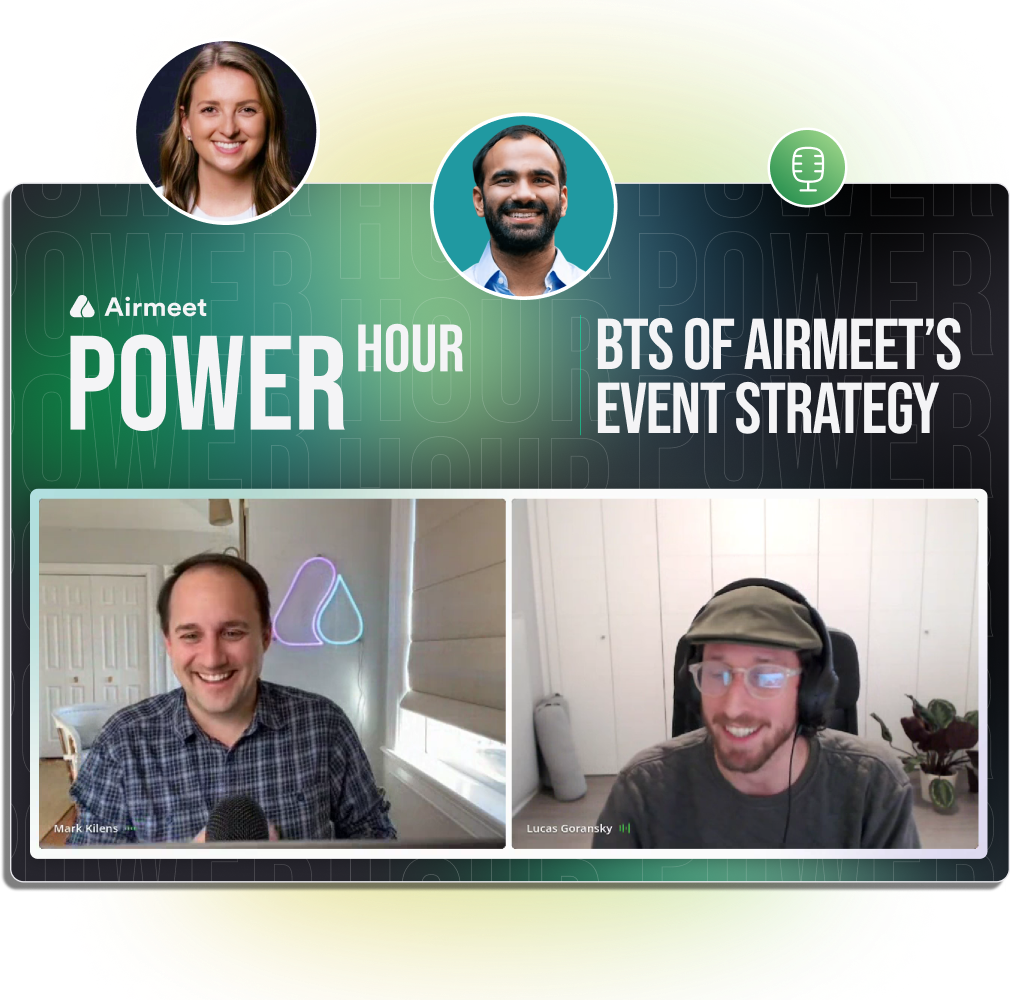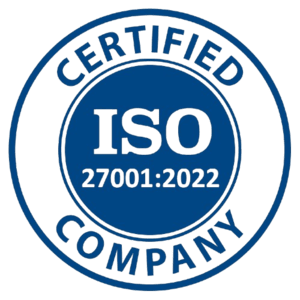Building an annual event calendar is not easy; there are countless things to plan, and track. And an event can never do its job completely when done in isolation.
To truly unlock the business potential of events, event marketers need to be in lock-step with many other teams, including content, demand gen, and sales.
At Airmeet, we’re constantly discussing how businesses can increase growth and tap into the power of events.
It’s one thing to talk the talk, but how do we walk the Event-led Growth walk at Airmeet?
During our recent live Power Hour episode: BTS of Airmeet’s Event Strategy, Airmeet’s CMO Mark Kilens chatted with Colleen Koslosky, Director of Content & Education at Airmeet and Kabir Uppal, Senior Marketing Manager at Airmeet, where they dug into Airmeet’s event strategy. In the hour the team discusses how, through their event strategy, Airmeet collaborates across teams to drive lead generation and maximize content opportunities. Later in the session Mark is joined by Lucas Goransky, Head of Events at Cascade, a strategy execution platform, to hear how he leverages Airmeet to drive pipelines with event-led growth.
Watch the full episode here:
Here, we break down Airmeet’s best practices for event strategies.
Start Planning Early
We can’t stress enough the importance of being proactive in your event strategy, particularly when working cross-functionally across various teams.
We like to get the sales team and account managers involved in event planning at the early stages, and recommend starting earlier than you think you need to. You should think of this process as internal marketing, getting teams onboard and aligned on not only the content that will be presented but also creating an opportunity to discuss the desired impact of the event and the experience you want to create. By doing so you create an opportunity for a feedback loop, where teams can ask questions, and contribute to strategy. This not only optimizes the event, but when teams are aligned, it helps drive impact from a pipeline and revenue perspective.
Build a Comprehensive Brief
An event brief is a central document for not only an events team, but also demand gen, sales, and content to understand the overall messaging, desired outcomes, and objectives of the event to come. Rather than have disjointed initiatives spread out across teams, our marketing team relies on a comprehensive brief that centralizes all relevant strategic information for easy access and future reference.
It also serves as a guide to determine which marketing campaign the event falls under for demand gen, and builds context for sales to swiftly follow up with leads post-event.
When building a brief you should consider the following questions, and align on them as a team:
- What type of event do you want to deliver?
- Who is your intended audience?
- How do you reach that audience (via promotion)?
- Why are you holding the event?
We create a brief for every event outlining objectives, messaging, the type of speakers we want to get, the audience, and all the promotional content for an event. You can download a copy of the template here.
Collaborate for Event-led Growth
Events are a perfect opportunity to collaborate cross-functionally across teams. During campaign planning, the events, demand gen, content teams, and creative should be closely aligned to determine the right content and events to fall within each campaign. By collaborating across functions, you provide an opportunity for teams to rally around brand initiatives, making the marketing process more efficient and unified.
Use Events to Grow your Pipeline
At Airmeet, we think of events in three main categories, and each speaks to a different stage of the funnel. An important part of our event strategy is to offer a combination of all three events throughout the month, with marketing events recurring monthly and many partner and customer events in between to sustain our lead and pipeline goals.

Creating events to serve different stages of the funnel, and subsequently creating content (more on that below) from those events to also serve different stages of the funnel, is how we assure our pipeline continues to grow.
Leverage Events for Content
Events are ripe with opportunities for engaging and relevant content that speaks to every stage of the funnel. It would be a huge miss to spend team resources, time, and budget to host and promote an event without having a content strategy to capitalize on the moment.
Today’s average buyer requires more interactions (27 interactions to be exact) with a company and their content before they make a purchase. By creating events and content around the same message, you’re creating more opportunities for your buyers to engage. Here are 8 ways to fuel your content engine with events and craft the perfect post-event marketing strategy.

Depending on the size of your event, you won’t likely create all eight forms of content from one event. Rather, each form of content serves a different purpose, and you’ll want to consider your goal to help determine the type of content you create from any given event. A deep dive on our post-event content strategy tips and more can be found here.
Optimize for the Future
To bring it full circle, by starting early in your event strategy you’ll be able to build a roadmap of events to come. Following a content strategy lays the groundwork for streamlining event planning in the future. With a centralized content brief already created, use it as a template moving forward, and apply learned insights to future events.
As you think of future planning, consider the following:
- What message are we putting out with our events?
- What content should we create based on that message?
- How does it align with our integrated campaigns?
How Airmeet Customers Drive More Pipeline With Event-led Growth
Lucas Goransky, Head of Events at Cascade and long-time Airmeet user, joined our recent Power Hour to share his event strategy and some pro tips on how he uses Airmeet to generate more event-led growth.
Early on Cascade began leveraging events to draw in audiences so they could educate them on their product. The company partners with their customers through events to attract the right audiences, thus accessing viable leads. And because they leverage their events to create relevant content, the sales team has impactful collateral available to share with leads upon follow-up.
Cascade also left us with an Airmeet pro tip: leverage Airmeet’s leaderboard to determine which of your leads are most engaged. Their team takes a tiered follow-up approach, reaching out directly to the top 100 attendees on the leaderboard to capture their most engaged audience. You can read more here about how Cascade focuses on a year-long event-led growth strategy to achieve long-term strategic business goals through Airmeet.
Summary
Airmeet’s event strategy and platform allow our teams to work strategically to maximize the ROI of our events. To learn more about how you can leverage Airmeet to achieve your event-led growth goals and drive more pipelines, check out our upcoming Power Hour events here.




























